#st catherine of sienna
Text
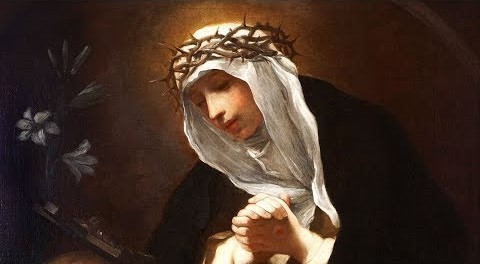


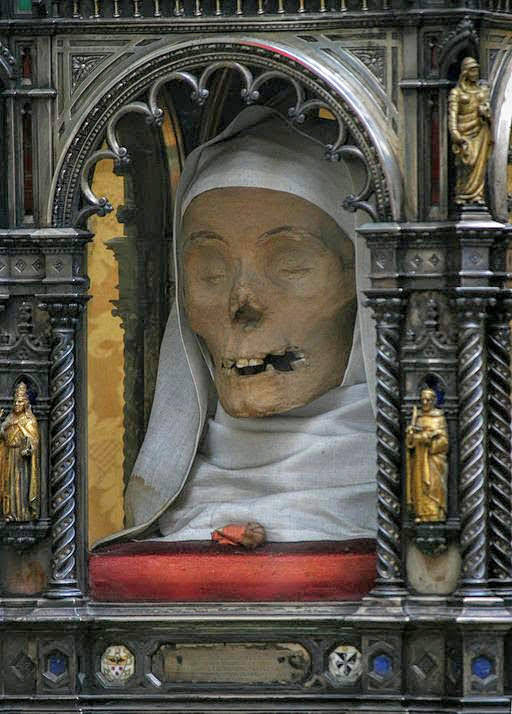


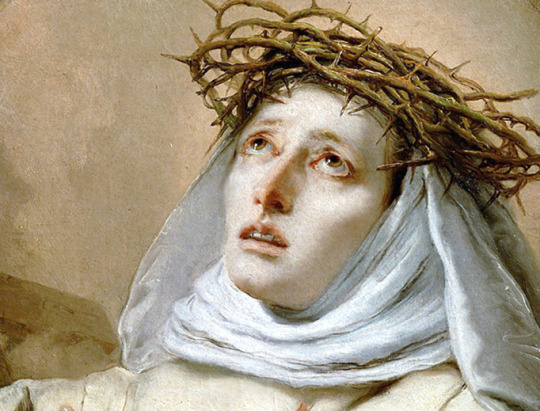
st. catherine of sienna - saints & angels - catholic online / buying the baby, 'what the living do', marie howe / lent, 'dutch masters', kate cayley / tomb of st. catherine of sienna, church of santa maria sopra in rome / the cow, ariana rienes / the saints come marching in, anne sexton / st. catherine of sienna (detail) by giovanni battista tiepolo
for @iphyelly who requested my favorite saint
#st catherine of sienna#catherine of sienna#saints#catholicism#catholic#web weave#web weaving#web weaves#web weavings#mine#mww#comparative#comparatives
369 notes
·
View notes
Text
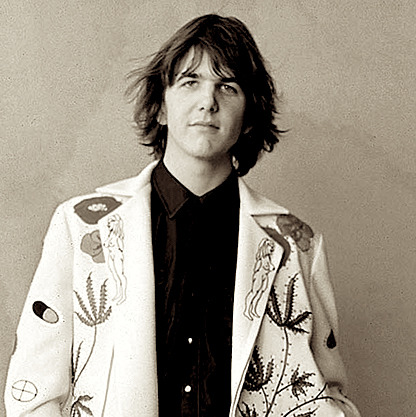

yung dionysus <333
12 notes
·
View notes
Text

I believe this Traditional Catholic stained glass image is of St. Catherine of Sienna.
#traditional catholicism#traditional catholic images#traditional catholic stained glass images#traditional catholic saints#traditional catholic saints images#st. catherine of sienna#the dominican order#dominican nun#dominican saints
1 note
·
View note
Text
Your problems = your Patron
Parental issues- St. Eugene de Mazenod
Tired - St.Joseph
Mental illness - St. Dymphna
Victim of SA - St. Maria Goretti
Problems with sexual urges - St. Augustine
Loneliness - St. John the Apostale
Vision Problems - St. Lucy
Being ugly - St. Rose of Lima
Low grades - St. Joseph of Cupertino
Fealing far away from God - St. Mary
Financial issues - St. Joseph
Risky Situation - St. Katherine of Alexandria (pls lray to her for Motorcyclist!!)
Issues with your spouse - St. Valentine
Overeating - St Charles Borromeo
Undereating - St. Catherine of Sienna
Balding - St. Agnes of Rome
Being hexed - Saint Columba of Spain
#christian witch#christopagan#christopaganism#folk catholicism#christian witchcraft#christopagan witch#mother mary#theotokos#folk christianity
237 notes
·
View notes
Text

Catherine of Sienna, Roman Catholic saint. Patron Saint of Italy alongside St Francis of Assisi
9 notes
·
View notes
Text
Awww…William and Catherine’s wedding day (Apr 29) is also St. Catherine of Sienna’s feast day! I don’t think that was a coincidence :)
====
❤️
50 notes
·
View notes
Text
“What is it you want to change? Your hair, your face, your body? Why? For God is in love with all those things and He might weep when they are gone.”
— St Catherine of Sienna
One of my Catholic friends sent this to me, and I was brought to tears. While I’m not Catholic, I enjoy learning about all new things, and this was particularly moving. St Catherine is considered the patron saint of women who have been called ‘too much’ (🙋♀️), whether about their bodies or passions. She was involved with politics and charity, and fought a hard battle against disordered eating her entire life. As a Christian who’s been told that my mental illness is a lack of faith (which is horrifically false) I appreciate voices and representations that discuss mental health and insecurity in spirituality ❤️❤️
“Speak the truth in a million voices. It is silence that kills.”
18 notes
·
View notes
Note
sorry if this is a weird question, but where would one start when it comes to learning about the more “erotic” side of christianity? i’ve never really explored this aspect of religion but i’m curious about it
not weird at all dw! i would start by reading / learning about medieval mystics, theyre the ones that further explored the concept of eroticism regarding God as far as im aware. i recommend hadewijch & st catherine of sienna as theyre the ones ive read myself but theres many more!
51 notes
·
View notes
Text
Saint of the Day – 30 April – St Catherine of Siena OP (1347-1380) Virgin
Saint of the Day – 30 April – St Catherine of Siena OP (1347-1380) Virgin. Revisiting St Catherine with Fr Weninger.
St Catherine of Sienna, VirginBy Fr Francis Xavier Weninger SJ (1805-1888)
Sienna, in the Tuscan District, is the favoured place where, in 1347, Caterina / Catherine, first saw the light of this world. Her life from her childhood, was a continual exercise of the choicest virtues…

View On WordPress
19 notes
·
View notes
Text
Today the Church honors St. Francis of Assisi (1181-1226 AD), Deacon and Friar.
Ora pro nobis.
Saint Francis of Assisi was born Giovanni di Pietro di Bernardone, informally named as Francesco, meaning “little Frenchman, by his mother who was from France.. He was an Italian Catholic friar, deacon, and preacher. He founded the men's Order of Friars Minor, the women’s Order of Saint Clare, the Third Order of Saint Francis and the Custody of the Holy Land.
Pope Gregory IX canonized Francis on 16 July 1228. Along with Saint Catherine of Sienna, he was designated Patron saint of Italy.
He has become highly sentimentalized and trivialized in the 20th century, including being rebranded as the 'environmentalist saint' with patronage of animals. This should break our hearts. In his life, however, he was completely devoted to preaching the Gospel of Jesus Christ, the formation of disciples of Jesus, adoration of Jesus in the Blessed Sacrament, and for the care of the poor, homeless, and outcast lepers. As a Roman Catholic Franciscan friar friend of mine once preached in my parish, "Don't you dare make my Francis into a birdbath or relegate him to a tiny statue in your garden! He was a radical in his love for Jesus, the poor, and for preaching the Gospel!"
Speaking of things Francis never said, there’s a beautiful prayer, often called the “Prayer of St. Francis”. It is lovely on its own merits. It was written during WWI in 1912 for a French newspaper as a plea for peace. I love this prayer, and commend it to all for use in your life of prayer, as I do the radical discipleship of blessed Francis, who gave all to Jesus in service to the poor, lepers, and the conversion of all peoples.
"An example of this [sentimentalization and] misrepresentation of Francis is the phrase, "Preach the gospel everywhere; if necessary use words," which is often ascribed to Francis. It's a popular phrase. The problem is, there is no evidence Francis said it. It’s like saying, "Feed the hungry; if necessary use food." To honor St Francis, go to your local homeless shelter and offer a foot clinic, to bathe their feet and tend to their wounds; go volunteer at your local soup kitchen, and sit down with the folks who come and listen to them.
Of course, the wisdom of these particular sayings do not depend upon their source. Many of us have been on the receiving end of words spoken in the name of the gospel by someone whose life or attitude did not "preach" the gospel. Our lives must bear witness to the good news of Jesus before our words about that good news can make any sense. Francis did encourage Christians “to shine as an example to others.” But to suggest that the gospel can be preached without using words is deceptive. We ought to be able to tell the Gospel in a manner that makes the story of our lives make sense. That requires words as well as actions. Francis did in fact write, “Being the servant of all, I am bound to serve all and to administer the balm-bearing words of my Lord.” (Letter to all the Faithful)
In 1219 AD, he went to Egypt in an attempt to convert the Sultan to put an end to the conflict of the Crusades. His attempt failed, but the Sultan was so impressed by his holiness and love that he let him go home to Italy rather than imprisoning him for ransom or executing him as an infidel.
By this point, the Franciscan Order had grown to such an extent that its primitive organizational structure was no longer sufficient. He returned to Italy to organize the Order. Once his community was authorized by the Pope, he withdrew increasingly from external affairs. In 1223, Francis arranged for the first Christmas live nativity scene. According to Christian tradition, in 1224 he received the stigmata during the apparition of Seraphic angels in a religious ecstasy, making him the first recorded person in Christian history to bear the wounds of Christ's Passion.
He died during the evening hours of 3 October 1226, while listening to a reading he had requested of Psalm 142, exhausted and physically broken by his radical devotion, at the age of 45.
Blessed Francis, you challenge me, and even frighten me because you actually actually did what Jesus said, and so render my accomodations to this world and excuses for not giving up all to follow Jesus invalid. Pray for me.
Most high, omnipotent, good Lord, grant your people grace to renounce gladly the vanities of this world; that, following the way of blessed Francis, we may for love of you delight to give ourselves wholly unto the adoration of your blessed Son, our Savior Jesus, and to the preaching of his Gospel for the salvation of the world with perfectness of joy; through Jesus Christ our Lord, who lives and reigns with you and the Holy Spirit, one God, forever and ever.
Amen.
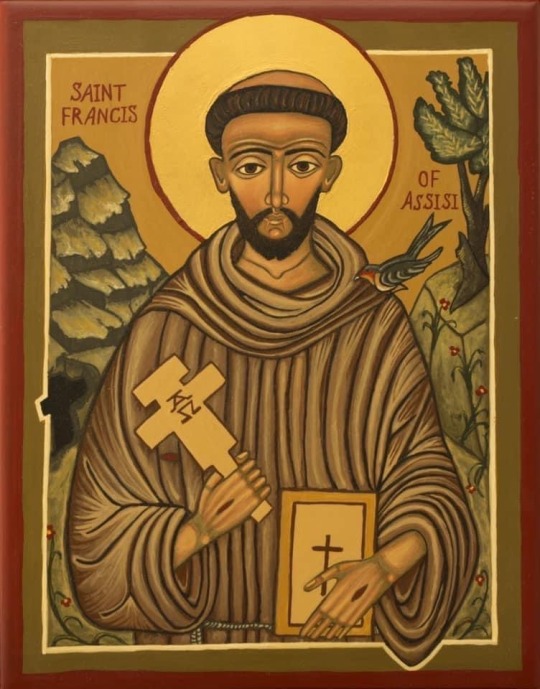
3 notes
·
View notes
Note
so how do stigmata work? I was reading on Catherine of Sienna and she has invisible ones, like how? Just confused about the whole thing, how are invisible marks found? Also how do you get them?
Stigmata is given to people by God alone in very, very rare occurrences that mirror in form the marks of Jesus at His Crucifixion (hands, feet, side, forehead in any combination visible or invisible). I think stigmata is a beautiful mystery of our faith, that when we see or read about these few cases approved to be real by the Vatican, that our faith can deepen more in how Jesus truly died on the cross for us. To offer up our suffering is a heavy cross to carry, but even heavier when we are persecuted. St. Padre Pio suffered immensely by persecution from his marks. These mystical wounds are a great gift that show us the person’s closeness to God and a chance for that person to share in the suffering. As for how the invisible ones work, I can only say that I’m not sure but it’s a question I’ll ask God when I meet Him face to face. I think He allowed invisible ones so that we can ponder more about God in a deeper way, because He loves us beyond human comprehension and thirsts for us.
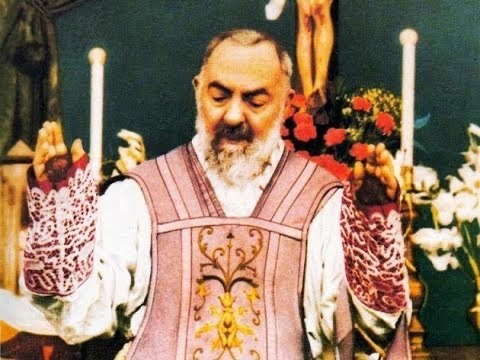
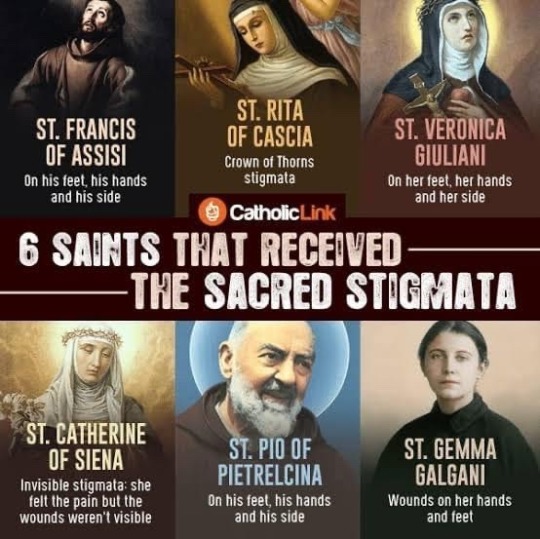
#stigmata#asks#there are more that had stigmata than that picture#but it’s just an example of variations found
19 notes
·
View notes
Text

A Traditional Catholic stained glass window of St. Catherine of Sienna.
#traditional catholicism#traditional catholic images#traditional catholic stained glass images#traditional catholic saints#st. catherine of siena#traditional catholic saints images
352 notes
·
View notes
Text


sitting at your vanity , catherine stands behind you —— hands atop your shoulders before a finger teases the long , burnt - sienna ringlets . you had to blink a couple of times for your eyes to settle with the blush - pink contacts . as an added accessory , a pink headband sits on the top of your head . you’d vomit if you didn’t care about the ensemble created by your own hands : these were colours you wouldn’t dare to drape on your skin , but it was a necessary evil .
❛ I don’t know , catherine . ❜ the first set of words that broke the silence . you looked nothing like yourself ! though the appearance was different , your accent was still strong , telling . ❛ can I even pull this off? ❜ uncertainty coats the tone of your voice much like the butterflies did in the pit of your stomach . in response , catherine kneels in front of you , forcing the both of you to meet eyes . ❛ of course you can ! I do this all the time , remember ? you just have to step away from alyssa and be . . . this person . what do you want her to look like ? sound like ? act like ? get to know her , and soon you’ll believe her . ❜ she moves aside and you come to a stand : you’re taking in the sight of the frills , the pastels , the thigh-high stockings and pink pumps . ❛ I look like I stepped right out of mean girls . . . I mean , alyssa and pink doesn’t mix at all and —— ❜ catherine cuts you off , ❛ pink and alyssa doesn’t mix , but pink and charlotte does . ❜
❛ charlotte ? that’s the name we’re goin’ with ? ❜
❛ yes , and charlotte is new to the city . charlotte also wouldn’t have a new yorker’s accent , so we’re going to have to work on that. ❜
❛ what am I supposed to do , not talk ? ❜
catherine winks , ❛ no , you’re going to talk , and by the time I finish you’re going to be pleasantly surprised. ~ ❜
and before you knew it , alyssa jones was no longer the person the reflection staring back at you . you were charlotte st. thomas.

#⋆。° ❝ ( DRABBLE. ) —— PERPETUATED WITH THESE WORDS.#( NEW VERSE ALERT NEW VERSE ALERT )#( BUT THERE'S GONNA BE A FOLLOWUP POST ABOUT THIS )
3 notes
·
View notes
Note
I was about to recommend St. Catherine of Sienna and-or St. Hildegard von Bingen, also St. Jadwiga of Poland, but I see You've already got them all, so You can treat this ask as their propaganda.
Among traditional/folk Saints I can think of St. Florian (commonly venerated as a patron of firefighters), St. Maurice, and Saints Cosmas and Damian (patrons of doctors).
Among others:
St. Cyril and Methodius (apostles of the Slavs)
St Joseph of Cupertino (patron of pilots, astronauts and people with learning disabilities)
there's also St. Hyacinth of Poland, legends of whom associate him with pierogi :D
OOOOOOOH SO MUCH GREATNESS IN JUST ONE ASK!
Ok, votes added for St Catherine of Siena, St Hildegard, St Hedwig, St Hyacinth, and St Joseph of Cupertino.
New entries created for Sts Cyril and Methodius (package deal), the Slavic missionaries. SUPER fun fact: their feastday is February 14 and I prefer to celebrate that than St Valentine.
As for the folk/traditional saints - too late to add them to the bracket! :(
#st catherine of siena#st hildegard of bingen#st hedwig#st jadwiga#st hyacinth#st joseph of cupertino#sts cyril and methodius#catholic saint tournament
1 note
·
View note
Text
HORUS: THE HEART OF THE WORLD
“The heart is the center of the human microcosm, at once the center of the physical body, the vital energies, the emotions, and the soul, as well as the meeting place between the human and the celestial realms where the spirit resides. How remarkable is this reality of the heart, that mysterious center which from the point of view of our earthly existence seems so small, and yet as the Prophet has said it is the Throne (al-‘arsh) of God the All-Merciful (ar-Rahmân), the Throne that encompasses the whole universe. Or as he uttered in another saying, “My Heaven containeth Me not, nor My Earth, but the heart of My faithful servant doth contain Me.” It is the heart, the realm of interiority, to which Christ referred when he said, “The kingdom of God is within you” (Lk 17:21), and it is the heart which the founders of all religions and the sacred scriptures advise man to keep pure as a condition for his salvation and deliverance. We need only recall the words of the Gospel, “Blessed are the pure in heart, for they shall see God” (Mt 5:8)
[…]
In Christianity the Desert Fathers articulated the spiritual, mystical, and symbolic meanings of the reality of the heart, and these teachings led to a long tradition in the Eastern Orthodox Church known as Hesychasm, culminating with St Gregory Palamas, which is focused on the “prayer of the heart” and which includes the exposition of the significance of the heart and the elaboration of the mysticism and theology of the heart. In Catholicism another development took place, in which the heart of the faithful became in a sense replaced by the heart of Christ, and a new spirituality developed on the basis of devotion to the Sacred Heart of Jesus. Reference to His bleeding heart became common in the writings of such figures as St Bernard of Clairvaux and St Catherine of Sienna. The Christian doctrines of the heart, based as they are on the Bible, present certain universal themes to be seen also in Judaism, the most important of which is the association of the heart with the inner soul of man and the center of the human state.
In Jewish mysticism the spirituality of the heart was further developed, and some Jewish mystics emphasized the idea of the “broken or contrite heart” (levnichbar) and wrote that to reach the Divine Majesty one had to “tear one’s heart” and that the “broken heart” mentioned in the Psalms sufficed. To make clear the universality of the spiritual significance of the heart across religious boundaries, while also emphasizing the development of the “theology of the heart” and methods of “prayer of the heart” particular to each tradition, one may recall that the name of Horus, the Egyptian god, meant the “heart of the world”. In Sanskrit the term for heart, hridaya, means also the center of the world, since, by virtue of the analogy between the macrocosm and the microcosm, the center of man is also the center of the universe. Furthermore, in Sanskrit the term shraddha, meaning faith, also signifies knowledge of the heart, and the same is true in Arabic, where the word îmân means faith when used for man and knowledge when used for God, as in the Divine Name al-Mu’min. As for the Far Eastern tradition, in Chinese the term xin means both heart and mind or consciousness.
– Seyyed Hossein Nasr (Chapter 3: The Heart of the Faithful is the Throne of the All-Merciful)”― Paths to the Heart: Sufism and the Christian East
Artwork: The falcon embodied the warrior and solar gods, among the most important of which was Horus. This magnificent breastplate, made using the cloisonné technique of inlaid glass, was found in the tomb of the teenage king Tutankhamun, who died around 1325 B.C. Egyptian Museum, Cairo
https://www.nationalgeographic.co.uk/history-and-civilisation/2021/03/from-cats-to-cows-to-crocodiles-ancient-egyptians-worshipped-many-animal-gods

#paths to the heart#sufism#seyyed hossein nasr#sufi gnosis#horus#the heart of the world#mystical christianity#ancient egypt
3 notes
·
View notes
Text
"The soul is in God and God in the soul, just as the fish is in the sea and the sea in the fish" (Catherine of Sienna, The Dialogue of St. Catherine of Sienna."
*14th-Century Italian mystic Catherine of Sienna
0 notes